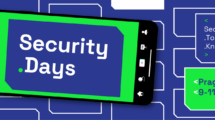Heidi Fraser-Krauss explains how eduroam can increase accessibility, reduce IT workload, and help close the digital equity gap.
Words: Heidi Fraser-Krauss, CEO at Jisc and member of the GÉANT board
Enabled by new technologies like 5G and the Internet of Things, progress towards truly blended learning is gathering momentum across the education and research sector.
At the same time, though, the digital equity gap leaves some learners struggling with even basic connectivity.
In addition, the need to provide secure access to Wi-Fi for learners using their own devices on campus throws up all sorts of problems for IT teams.
Students and staff need consistent, reliable connectivity
In an ideal world, learners should be able to connect 24/7 to their institution’s resources – and stay connected.
In the real world, however, they might need to work in a public library, or at home. They might have to travel to another campus or take a bus home every day. And every time they move locations, they have to search again for free Wi-Fi and re-authenticate.
It’s a long way from the ideal of ‘zero touch’ connectivity.
Education anywhere
eduroam, on the other hand, gives students and staff a consistently positive experience, delivering seamless internet connectivity across their own institution and beyond with a single Wi-Fi profile.
Simply by opening their laptop, users gain access to any eduroam-enabled site, increasing the scope of places learners can connect. Some 560 organisations across the UK offer the service from more than 2,000 eduroam hotspots.
Reducing IT department workload and costs
eduroam accommodates all the mobile connectivity requirements of an institution: it supports users and visitors connecting to the local network, and users connecting to other participating networks.
And it does all this without placing significant burdens upon an institution’s IT resources. Instead, eduroam sits separately from the network, which reduces IT department workload.
It also improves the security of bring-your-own-device (BYOD) wireless infrastructures. The ability to effectively protect, monitor and audit traffic on the network is essential for safeguarding, and eduroam gives institutions “identifiable oversight” when anyone connects using their own device.
And any organisation connected to the Janet Network is eligible to use Jisc’s eduroam service as part of their Jisc membership.
Addressing digital equity
Making eduroam available in student accommodation and transport networks and in places like libraries, community centres, and other public buildings would massively extend access to zero touch internet connectivity for students and education sector staff who, for whatever reason, are not on campus.
For example, eduroam is available at more than 500 public sector sites in Kent and Medway, delivering connectivity to council offices, community centres, fire stations, hospitals and more. It’s also increasing the number of places learners at local colleges can connect, as eduroam is now also available at libraries across Kent.
Replicated across the UK, this could benefit all those learners who don’t have an internet connection at home, whose broadband connection is poor, or who can’t afford the data roaming costs.
The vision: eduroam everywhere
At Jisc, the vision is to extend connectivity even further, so that learners can access eduroam in areas where there is only cellular connectivity – on public transport, say, or at home.
We are working on a range of portable devices that use cellular connectivity to deliver eduroam to students and staff. These devices will enable learners to continue to access resources wherever they are – on the bus, in sports facilities and even in shared off-campus accommodation. The devices for home use are small enough to fit into a rucksack, while larger versions are being used in off-campus buildings to deliver eduroam to up to 100 users.
The sky’s the limit
The potential for eduroam to extend the boundaries of connectivity is massive and far-reaching.
To prove it, we recently demonstrated that Jisc’s eduroam service can successfully connect to the Starlink satellite internet service, and we’re exploring other satellite internet services too. This opens up the possibility that eduroam could be made available to UK educators and researchers anywhere on the planet with a clear view of the sky.







